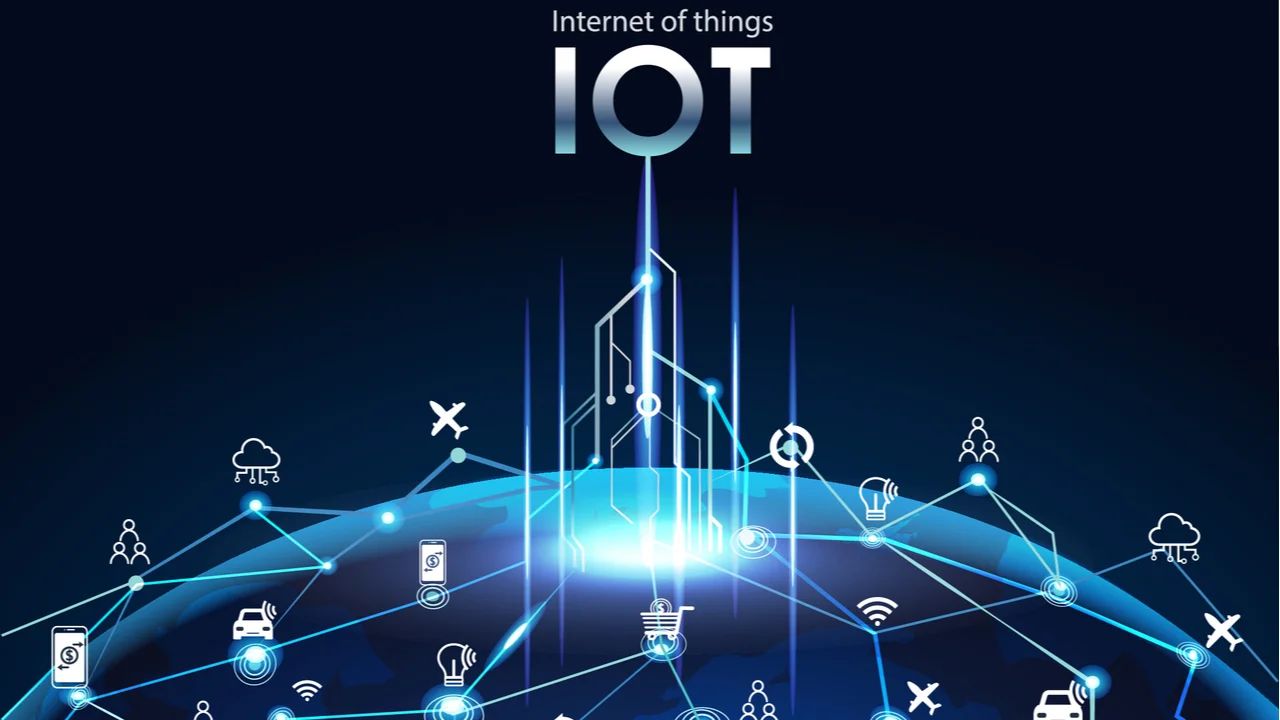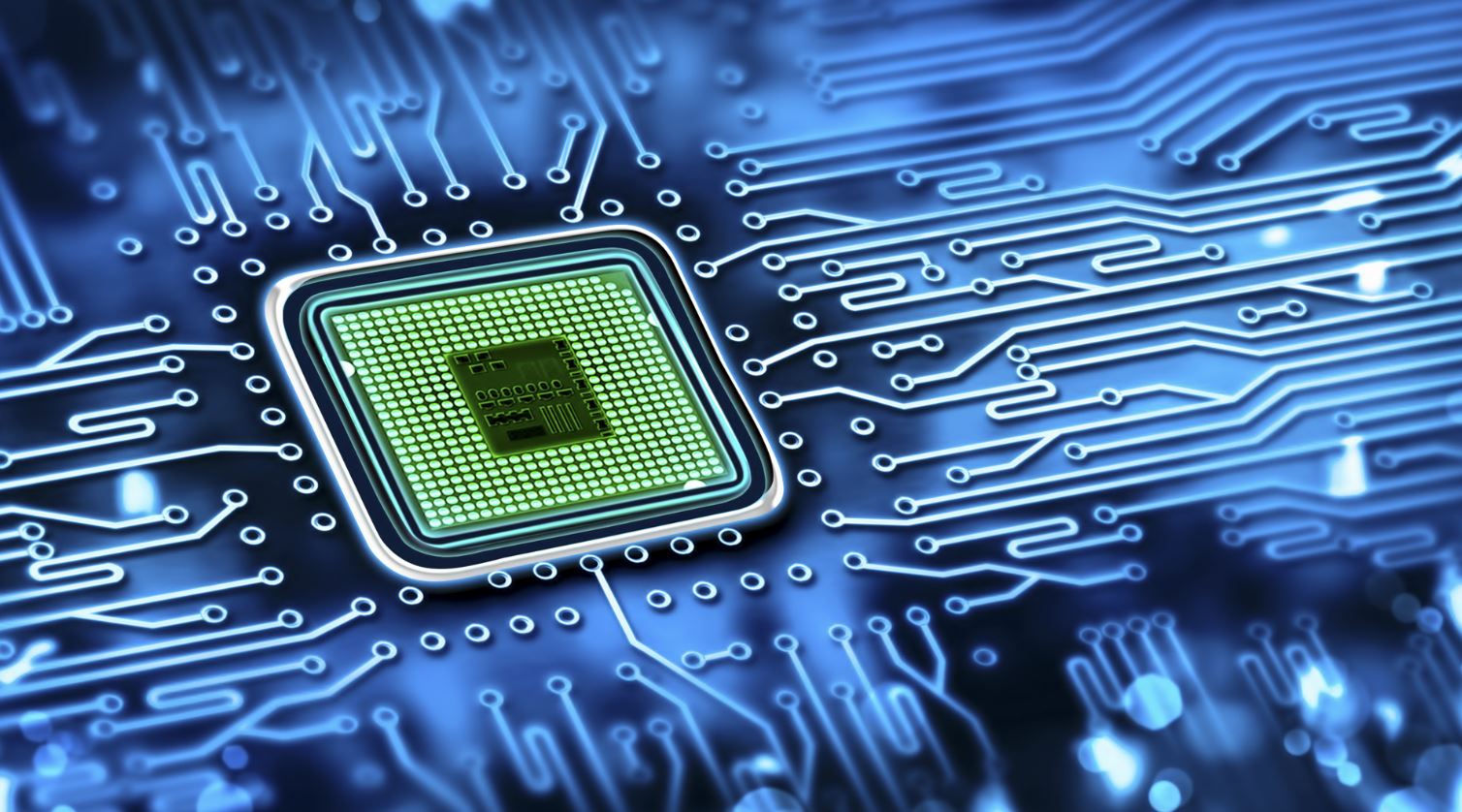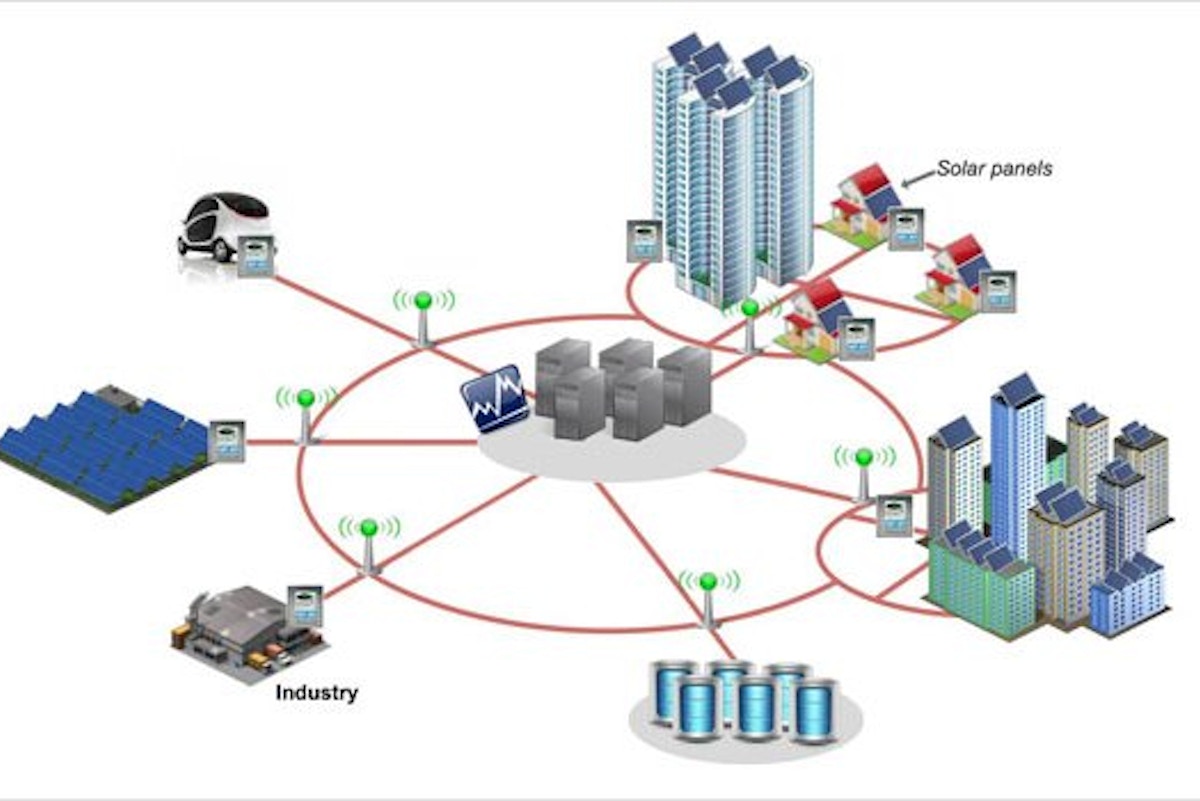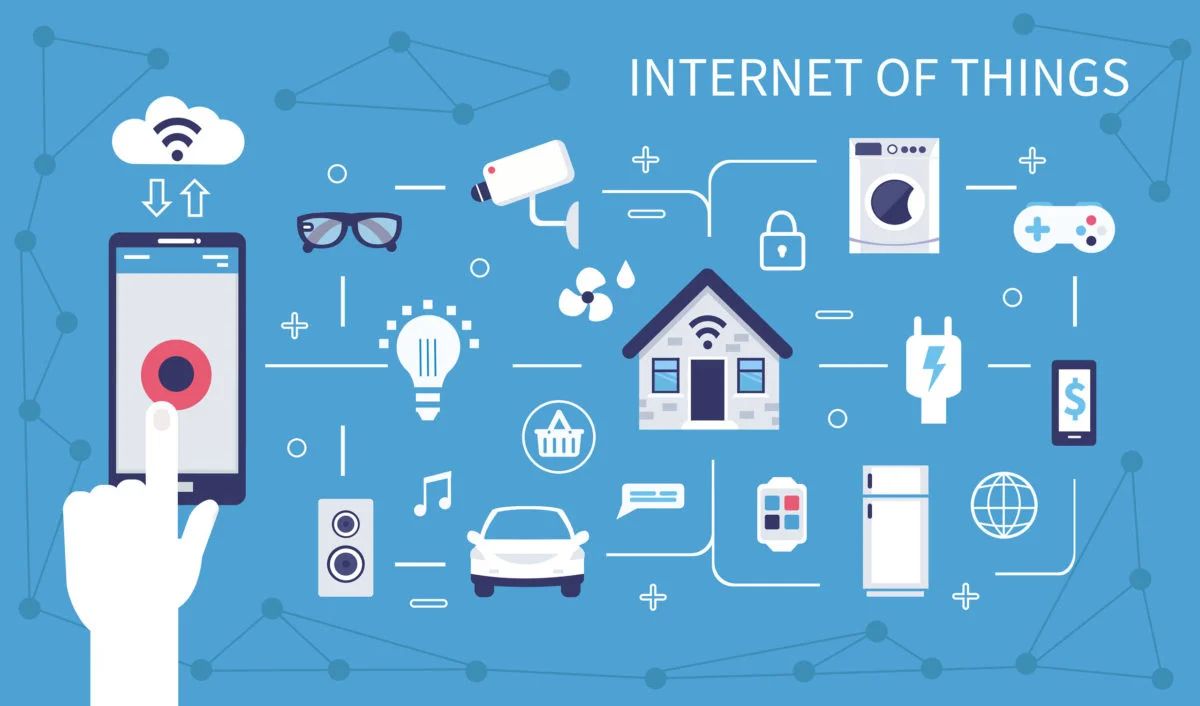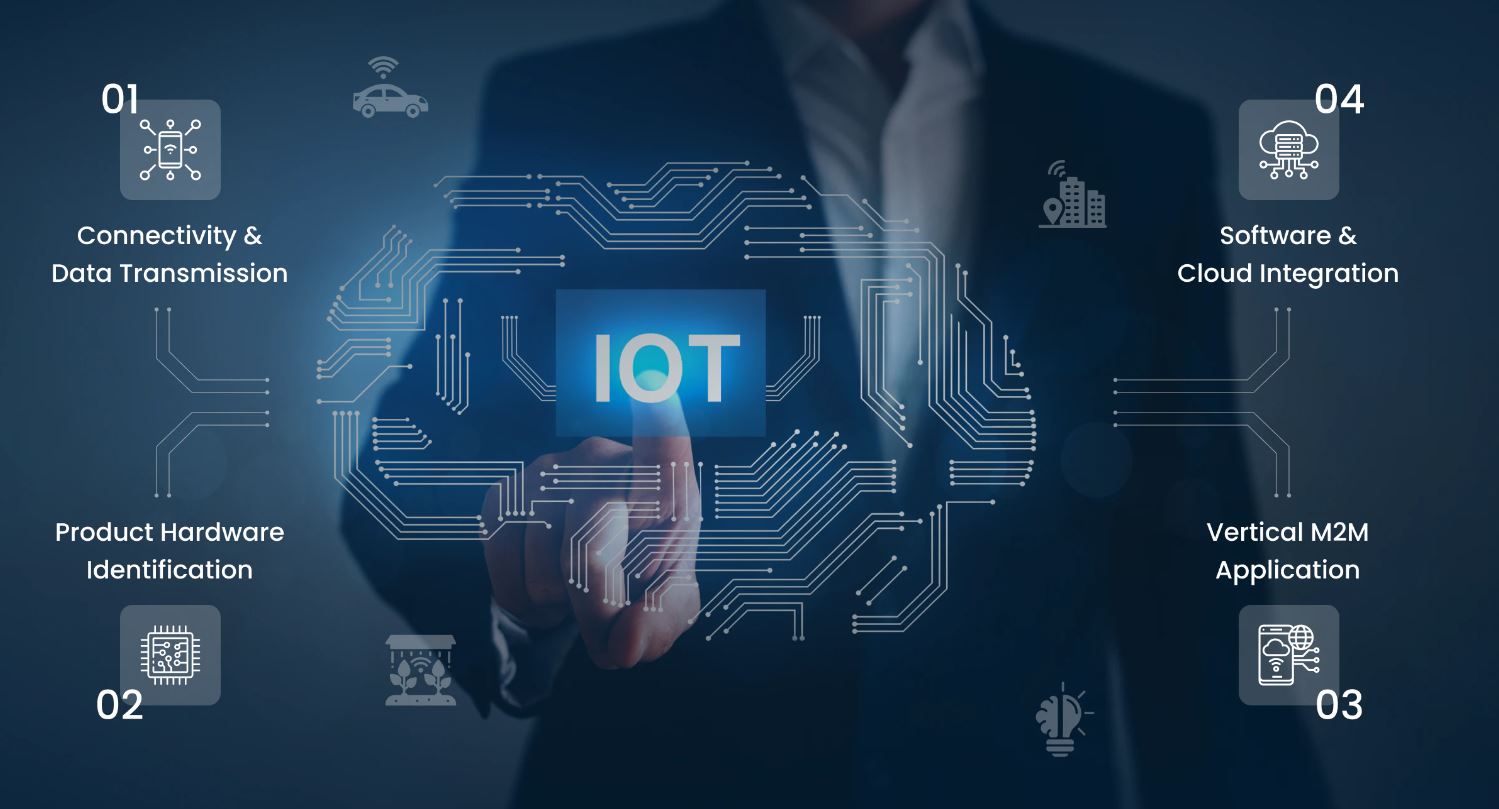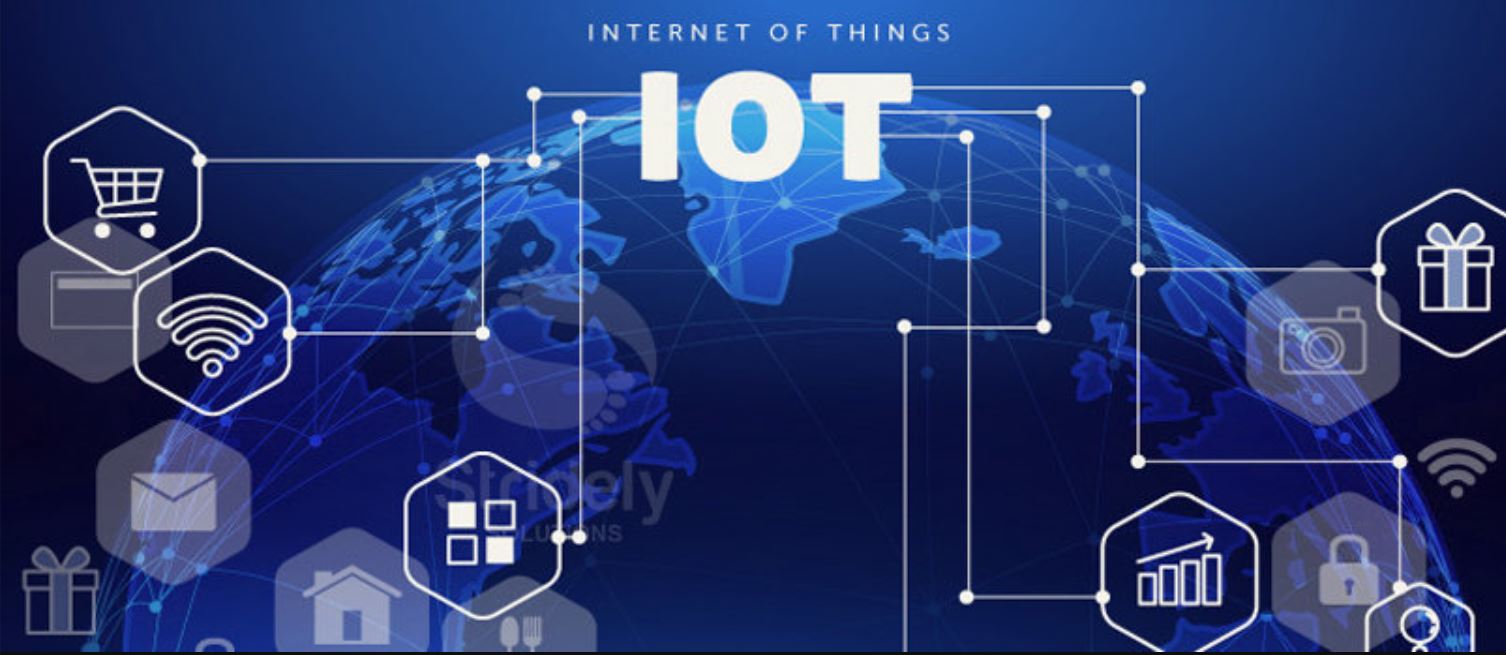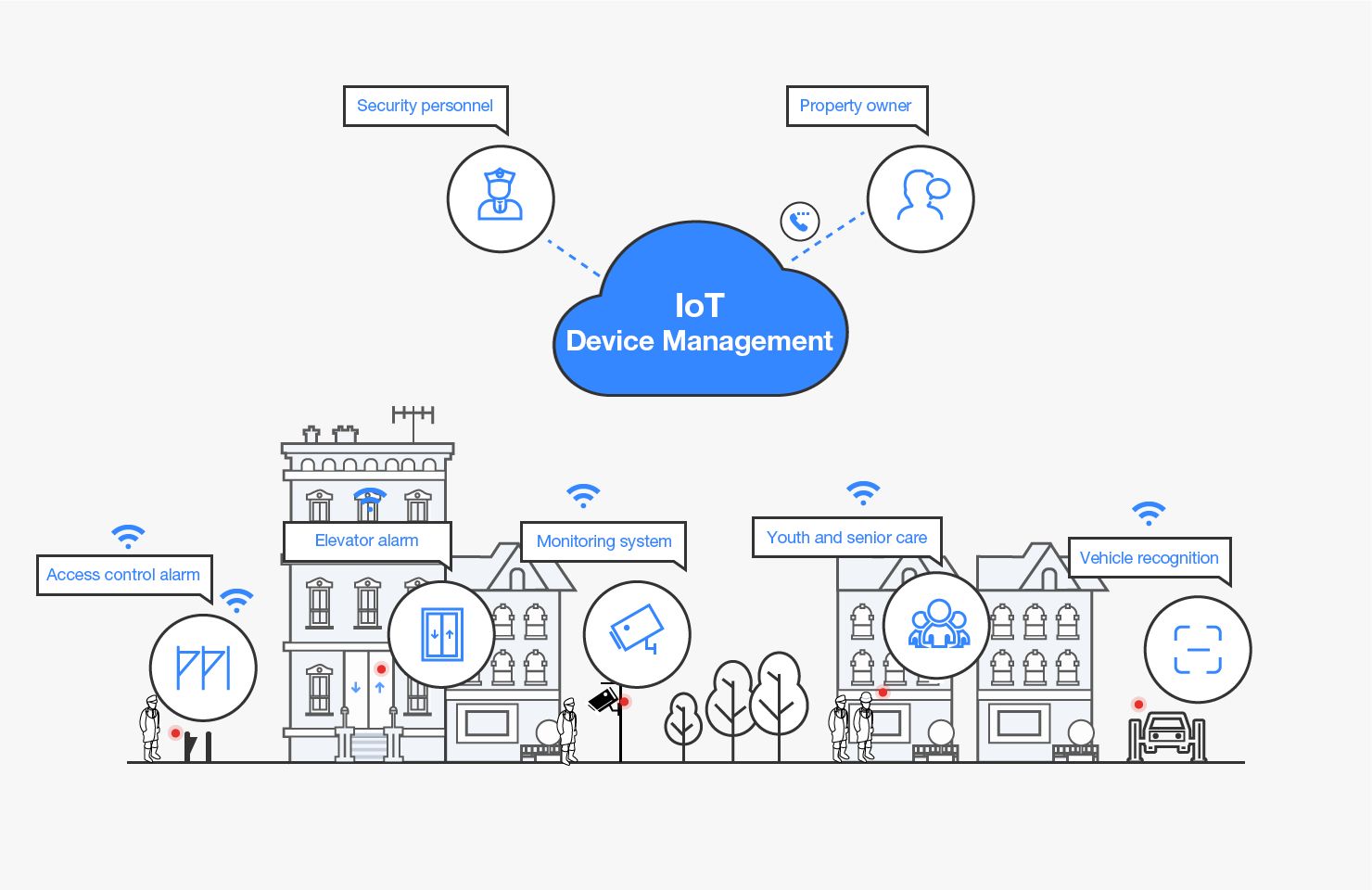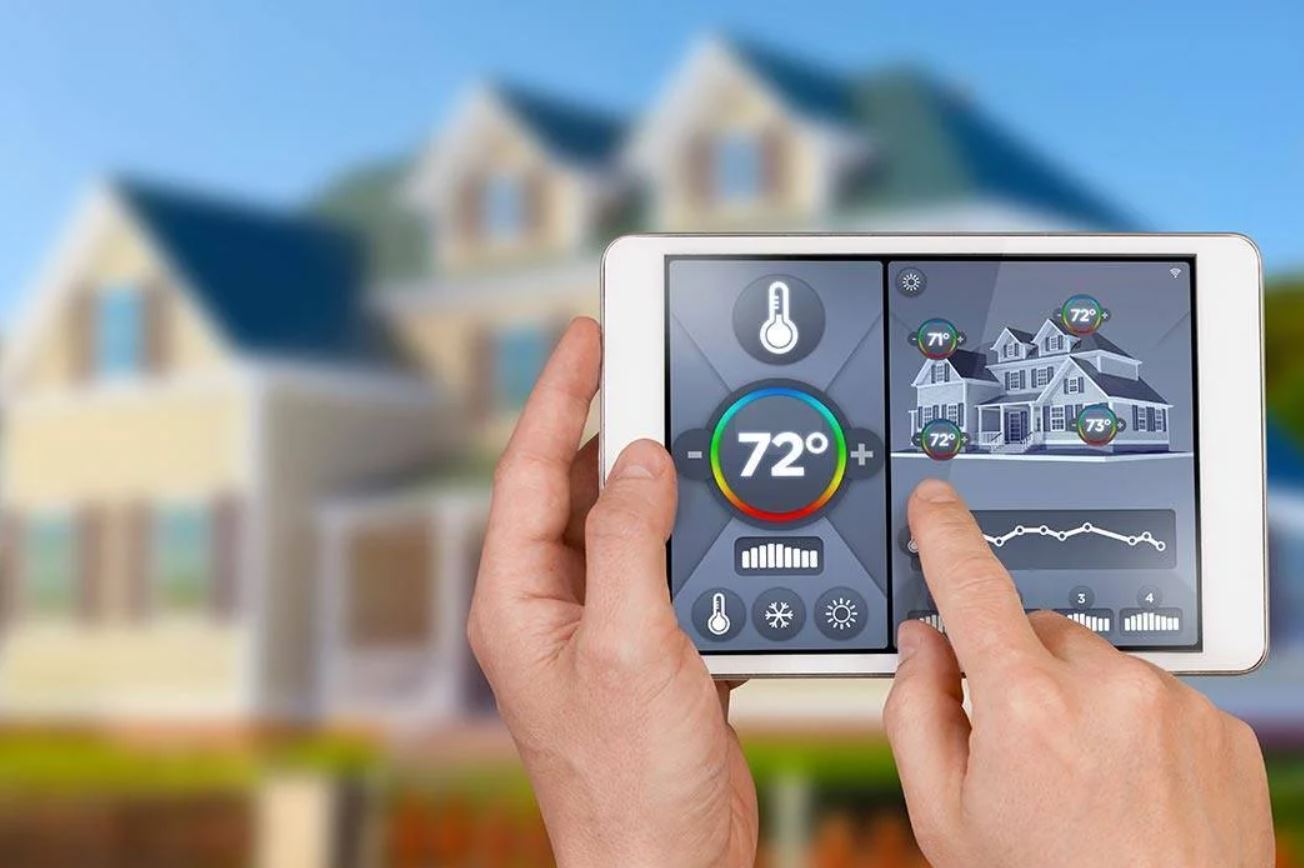Introduction
The Internet of Things (IoT) has emerged as a game-changing technology in recent years, revolutionizing the way we interact with the world around us. It has become a buzzword in the tech industry, but what exactly is IoT? In this article, we will explore the definition, evolution, workings, components, benefits, applications, challenges, and future prospects of IoT.
The Internet of Things refers to the network of interconnected physical devices that can collect and exchange data over the internet. These devices, equipped with sensors and software, allow them to communicate and interact with each other, as well as with humans. From smart homes and wearable devices to industrial machinery and healthcare systems, IoT has found applications in various domains, transforming the way we live and work.
The concept of IoT has its roots in the early 1980s when researchers at Carnegie Mellon University connected a Coke vending machine to the internet. This experiment laid the foundation for the integration of everyday objects with digital technologies. However, it was not until the 2000s that IoT gained significant traction, thanks to advancements in wireless communication, microelectronics, and cloud computing.
The Internet of Things operates on a complex infrastructure that enables communication, data processing, and decision-making. At its core, IoT works by connecting devices through the internet and using sensors to collect data. These devices can range from simple household appliances to complex machinery in industrial settings. The data collected is then transmitted to a central server or cloud platform, where it is analyzed, processed, and made available for further actions or insights.
IoT encompasses various components that enable its functioning. These include sensors, actuators, connectivity protocols, cloud platforms, and data analytics tools. Sensors play a vital role in gathering data, while actuators allow devices to take actions based on the collected data. Connectivity protocols, such as Wi-Fi, Bluetooth, and cellular networks, facilitate device communication. Cloud platforms offer storage and computing capabilities, processing the massive amounts of data generated by IoT devices. Data analytics tools help derive meaningful insights from the collected data, enabling businesses to make informed decisions.
The benefits of IoT are vast and impactful. It has the potential to enhance efficiency, productivity, and convenience in our daily lives. From smart homes that automate various tasks to wearable devices that track our health and fitness, IoT has made our lives more comfortable and seamless. In industries, IoT enables predictive maintenance, remote monitoring, and automation, leading to reduced costs and increased operational efficiency. Furthermore, IoT has significant implications for sustainability and environmental conservation, enabling energy-efficient systems and intelligent resource management.
Definition of IoT
The Internet of Things (IoT) refers to the interconnected network of physical devices, vehicles, appliances, and other objects embedded with sensors, software, and connectivity capabilities. These devices can collect and exchange data over the internet without the need for human-to-human or human-to-computer interaction.
At its core, IoT is characterized by the ability of these devices to communicate with each other and with external systems, such as cloud platforms or data centers, to share and analyze data. This data exchange and analysis enable IoT devices to perform various tasks, make decisions, and trigger specific actions based on the collected information.
The concept behind IoT is to create a seamless integration of the physical and digital worlds, where everyday objects become intelligent, connected entities. Through the use of sensors, IoT devices can capture environmental data, such as temperature, humidity, motion, and location. They can also collect data about usage patterns, performance metrics, and user interactions.
IoT is not limited to specific industries or applications but can be found in various sectors, including smart homes, healthcare, transportation, agriculture, manufacturing, and more. Smart home devices, such as thermostats, lighting systems, and security cameras, can be controlled remotely through smartphone apps or voice assistants, making our lives more convenient and efficient.
Another example is in the healthcare industry, where wearable devices, fitness trackers, and medical sensors can monitor vital signs, track physical activity, and assist in remote patient monitoring. IoT in transportation can enable vehicle tracking, fleet management, and traffic optimization, leading to reduced congestion and improved safety.
One of the key features of IoT is its ability to generate massive amounts of data. This data, commonly referred to as big data, holds valuable insights that can be leveraged to enhance decision-making, identify patterns, and predict future trends. Through advanced data analytics and machine learning techniques, businesses can gain a deeper understanding of customer preferences, optimize operations, and develop innovative products and services.
In a nutshell, IoT is a technological ecosystem that connects physical devices, enabling them to communicate and share data over the internet. It has the potential to revolutionize industries, improve efficiency, and enhance our daily lives by creating a more connected and intelligent world.
Evolution of IoT
The evolution of the Internet of Things (IoT) can be traced back to the early 1980s when researchers at Carnegie Mellon University connected a Coke vending machine to the internet, making it the first internet-connected appliance. This experiment marked the beginning of the integration of physical objects with digital technologies.
Throughout the 1990s and early 2000s, the development of wireless communication technologies, such as Wi-Fi and Bluetooth, laid the foundation for the expansion of IoT. These technologies enabled devices to connect and communicate with each other without the need for physical wires or cables, making it easier to deploy IoT solutions.
As internet connectivity became more accessible and affordable, the number of connected devices began to surge. The emergence of smartphones and their widespread adoption played a crucial role in advancing IoT. The combination of smartphones with sensors and internet connectivity allowed users to interact with and control IoT devices remotely.
In recent years, the proliferation of cloud computing and advancements in data analytics technologies have further accelerated the growth of IoT. Cloud platforms offer scalable storage and computing capabilities, allowing businesses and individuals to efficiently process and analyze the massive amounts of data generated by IoT devices.
The evolution of IoT is also closely tied to the development of machine learning and artificial intelligence (AI). With the ability to analyze vast amounts of data and identify patterns, AI algorithms can provide valuable insights and enable predictive capabilities in IoT systems. This integration of AI and IoT has paved the way for more intelligent and autonomous applications.
The concept of edge computing has also emerged as a crucial aspect of IoT evolution. Edge computing refers to the processing and analysis of data at or near the edge devices, rather than sending it to a centralized cloud server. This approach reduces latency and enables real-time decision-making, making it ideal for applications that require immediate responses or are sensitive to network connectivity.
Furthermore, the evolution of IoT has led to the creation of industry-specific standards and protocols to ensure interoperability and seamless communication between devices from different manufacturers. Standardization efforts, such as the Zigbee Alliance and the Open Connectivity Foundation, have played a vital role in promoting compatibility and collaboration in the IoT ecosystem.
Looking ahead, the future of IoT is promising. The continued advancements in sensor technology, connectivity, and computing power will enable even more devices to participate in the IoT network. With the advent of 5G, IoT will experience significant growth, as it offers higher bandwidth, lower latency, and increased device density.
Moreover, IoT will play a crucial role in shaping the development of smart cities, precision agriculture, autonomous vehicles, and healthcare systems. By seamlessly connecting devices and leveraging data insights, IoT has the potential to transform our daily lives, enhance efficiency, and create a more connected and intelligent world.
How IoT Works
The Internet of Things (IoT) operates on a complex infrastructure that allows devices to connect, communicate, and share data. Understanding how IoT works involves exploring the various components and processes involved in its functioning.
At the core of IoT are the physical devices, also known as “things,” that are equipped with sensors, actuators, and connectivity capabilities. These devices can range from everyday objects like smart thermostats and fitness trackers to industrial machinery and infrastructure.
The sensors within IoT devices play a crucial role in collecting data about the physical environment. These sensors can measure parameters such as temperature, humidity, pressure, light intensity, motion, and many others. The collected data is then processed by the device’s internal software or firmware.
The next step in how IoT works is the communication between the devices. IoT devices use various connectivity protocols, such as Wi-Fi, Bluetooth, Zigbee, or cellular networks, to establish communication channels. This allows the devices to transmit and receive data from each other and external systems, such as cloud platforms or data centers. The data is typically transmitted in the form of packets using internet protocols, such as TCP/IP.
Once the data is transmitted, it can be stored and processed in cloud platforms or data centers. These cloud platforms provide the necessary storage and computing resources to handle the massive amounts of data generated by IoT devices. Data can be stored in databases or data lakes for further analysis and retrieval.
IoT devices also rely on data analytics techniques to extract meaningful insights from the collected data. Advanced analytics, machine learning, and artificial intelligence algorithms are used to identify patterns, detect anomalies, make predictions, and enable decision-making based on the data. These analytics capabilities are often performed either within the cloud platforms or at the edge, closer to the devices themselves.
The data insights derived from IoT devices can be used for various purposes. For example, in a smart home scenario, the data from sensors can be analyzed to automatically adjust the temperature based on occupancy patterns or to optimize energy usage. In an industrial setting, IoT devices can enable predictive maintenance by monitoring equipment performance and detecting potential failures before they occur.
Furthermore, IoT can enable two-way communication, allowing users or external systems to control and interact with the devices remotely. Mobile apps, web interfaces, or voice assistants can be used to send commands or receive information from IoT devices. This enables users to monitor and manage their IoT devices from anywhere in the world.
Overall, the functioning of IoT revolves around the seamless integration of various components, including sensors, connectivity, cloud platforms, data analytics, and user interfaces. This integration enables devices to collect and share data, analyze it for insights, and trigger actions or provide information based on the collected and analyzed data. The continuous advancements in IoT technologies will further enhance its capabilities and drive innovation in various industries.
Components of IoT
The Internet of Things (IoT) encompasses various components that work together to enable its functionality and connectivity. These components play a vital role in collecting, transmitting, storing, and processing data generated by IoT devices.
1. Sensors: Sensors are at the heart of IoT. They are responsible for capturing data from the physical environment. IoT devices can be equipped with a wide range of sensors, including temperature sensors, humidity sensors, motion sensors, light sensors, and more. These sensors convert physical measurements into electrical signals that can be processed and analyzed.
2. Actuators: Actuators are the components responsible for carrying out actions based on the data collected by IoT devices. They can be mechanical, electrical, or hydraulic systems that respond to commands or signals. Examples of actuators include motors, valves, relays, and switches. Actuators enable devices to perform tasks or control physical objects in response to specific events or conditions.
3. Connectivity: IoT devices need connectivity to exchange data with other devices and systems. There are several communication protocols and technologies used in IoT, such as Wi-Fi, Bluetooth, Zigbee, Z-Wave, cellular networks (3G, 4G, and now 5G), and LPWAN (Low-Power Wide Area Networks) like LoRaWAN and NB-IoT. These connectivity options provide different ranges, bandwidths, and power consumption levels, allowing for various IoT use cases.
4. Cloud Platforms: Cloud platforms are essential for processing and storing the massive volumes of data generated by IoT devices. Cloud-based services offer scalable storage and computing capabilities that can handle the high data throughput of IoT applications. This allows for efficient data management, analysis, and real-time decision-making. Cloud platforms also provide APIs and tools for developers to build and deploy IoT applications with ease.
5. Data Analytics: Data analytics is a critical component of IoT as it enables the extraction of valuable insights from the collected data. IoT solutions use various analytics techniques, including descriptive analytics, predictive analytics, and prescriptive analytics. Through data analytics, businesses can gain actionable insights, detect patterns and anomalies, optimize processes, and make informed decisions. Machine learning and artificial intelligence algorithms are often employed to analyze IoT data and enable intelligent automation.
6. User Interfaces: IoT devices often require user interfaces to interact with users or external systems. These interfaces can be in the form of mobile applications, web portals, voice assistants, or even physical buttons and displays on the devices themselves. User interfaces provide a means for users to control and monitor IoT devices, view data, receive alerts, and manage settings remotely.
7. Security: Security is a crucial component of IoT due to the sensitive nature of the data being transmitted and the potential risks associated with unauthorized access. IoT systems need to implement robust security measures, including authentication, encryption, access controls, and secure communication protocols. Additionally, firmware and software updates are necessary to patch vulnerabilities and protect against emerging threats.
8. Integration: Integration is key in IoT systems, as devices from different manufacturers and technologies need to work together seamlessly. Interoperability standards, like MQTT, CoAP, and RESTful APIs, enable devices to communicate and share data regardless of their underlying protocols. The integration of IoT with enterprise systems, such as the integration of sensor data with CRM or ERP systems, can further enhance the value and utility of IoT solutions.
By leveraging these components in a cohesive manner, IoT systems are able to collect, transmit, analyze, and act on data from the physical world, enabling businesses and individuals to make informed decisions, automate processes, and create innovative applications and services.
Benefits of IoT
The Internet of Things (IoT) has brought numerous benefits and transformative changes to various industries and our daily lives. From enhancing efficiency and productivity to improving convenience and sustainability, IoT offers a range of advantages that contribute to a more connected and intelligent world.
1. Enhanced Efficiency: IoT enables automation and optimization of processes, leading to increased efficiency. For example, in industries, IoT devices can monitor equipment performance, detect anomalies, and enable predictive maintenance, reducing downtime and improving productivity. In smart homes, IoT systems can automatically adjust energy usage based on occupancy patterns, resulting in energy savings.
2. Improved Convenience: IoT simplifies everyday tasks and enhances convenience. Smart home devices, such as thermostats, lighting systems, and security cameras, can be controlled remotely through smartphone apps or voice assistants. IoT-powered wearable devices, like fitness trackers and smartwatches, provide personalized health tracking, making it easier to maintain an active lifestyle.
3. Real-time Insights: IoT generates a massive amount of data, which can be processed and analyzed in real-time. This allows businesses to gain immediate insights into operations, customer behavior, and market trends. Real-time data analysis enables proactive decision-making and facilitates quick responses to changing business conditions.
4. Cost Savings: IoT can lead to significant cost savings in various sectors. In industries, IoT-enabled predictive maintenance reduces unexpected breakdowns and expensive repairs. Smart energy management systems can optimize resource usage and reduce utility costs in both residential and commercial buildings. Moreover, IoT-powered supply chain management systems streamline processes, minimizing inventory and transportation costs.
5. Improved Quality of Life: IoT applications have improved the quality of life for individuals. In healthcare, IoT devices allow remote patient monitoring, empowering patients to take an active role in their own health management. Smart cities leverage IoT to optimize traffic flow, reduce pollution, and enhance the overall well-being of residents.
6. Environmental Sustainability: IoT plays a crucial role in sustainability efforts. Smart energy grids enable efficient utilization of resources by dynamically adjusting energy production and distribution based on demand. IoT-based precision agriculture helps optimize water usage, reduce pesticide usage, and enable better crop yields. Smart waste management systems can detect fill levels of bins, optimized collection routes, and reduce unnecessary waste transportation.
7. Safety and Security: IoT enhances safety and security in various domains. In industrial settings, IoT-enabled sensors monitor for hazardous conditions and can trigger alerts or shut down operations in case of emergencies. In smart homes, IoT devices can provide real-time video surveillance, smart locks, and fire detection systems, enhancing home security.
8. Innovation and New Opportunities: IoT opens up doors for innovation and new business opportunities. The connectivity of devices and the availability of data create a platform for developing novel applications and services. Startups and entrepreneurs can leverage IoT to create disruptive solutions in industries like healthcare, energy management, agriculture, and transportation.
The benefits of IoT are multifaceted, impacting various aspects of our lives. As IoT continues to evolve and mature, its potential to transform industries, optimize processes, and enhance our daily lives will only grow.
Applications of IoT
The Internet of Things (IoT) has found numerous applications across various sectors, revolutionizing industries and improving the way we live and work. IoT’s ability to connect objects, collect data, and enable intelligent decision-making has paved the way for innovative solutions and transformative advancements. Here are some notable applications of IoT:
1. Smart Homes: IoT enables the creation of smart homes, where connected devices and systems automate tasks and enhance comfort and security. IoT devices like smart thermostats, lighting systems, and security cameras can be controlled and monitored remotely through smartphone apps or voice assistants, providing convenience and energy-efficient living.
2. Healthcare: IoT has significant implications in healthcare, improving patient care and enabling remote monitoring. IoT devices like wearable fitness trackers and health monitors track vital signs, physical activity, and sleep patterns. Remote patient monitoring systems enable healthcare professionals to monitor patients’ conditions without the need for frequent clinic visits.
3. Industrial Internet of Things (IIoT): IIoT’s applications range from manufacturing and logistics to energy and agriculture. Connected sensors and devices in industrial settings monitor machinery performance, detect anomalies, and enable predictive maintenance, resulting in reduced downtime and optimized operations.
4. Smart Cities: IoT plays a vital role in creating smart and sustainable cities. Connected sensors and infrastructure collect data on traffic flow, air quality, waste management, and energy consumption. This data is leveraged to optimize urban planning, reduce congestion, and improve overall livability.
5. Agriculture: In agriculture, IoT techniques are used for precision farming, enabling optimal use of resources and increasing crop yields. IoT devices collect data on soil moisture, weather conditions, and crop health, enabling farmers to make informed decisions about irrigation, fertilization, and pest control.
6. Energy Management: IoT helps organizations and individuals optimize energy usage and reduce costs. Smart grid systems leverage IoT technology to monitor energy consumption, adjust usage based on demand, and support the integration of renewable energy sources. IoT-enabled smart meters provide real-time data, allowing consumers to track and manage their energy usage.
7. Transportation and Logistics: IoT improves transportation efficiency and logistics management. Connected vehicles use sensors, GPS, and communication technologies to enable real-time tracking, optimize routes, enhance fuel efficiency, and improve safety. IoT-enabled supply chain management ensures real-time visibility into inventory, streamlines operations, and reduces costs.
8. Environmental Monitoring: IoT facilitates environmental monitoring and conservation efforts. Sensors and networks transmit real-time data on air quality, water quality, and natural resource consumption. This data is used to support pollution control, resource management, and early warning systems for natural disasters.
9. Retail: IoT applications in retail include inventory management, customer analytics, and personalized experiences. IoT-enabled devices track inventory levels, detect product movement, and automate replenishment. Customer behavior data, collected through IoT devices, helps retailers provide personalized recommendations and targeted marketing campaigns.
These are just a few examples of the vast and diverse range of applications of IoT. As technology advances and connectivity becomes more pervasive, IoT will continue to drive innovation, optimize processes, and transform industries, opening up new possibilities for businesses and individuals alike.
Challenges in IoT
While the Internet of Things (IoT) offers immense potential and benefits, it also faces various challenges that need to be addressed for its widespread adoption and successful implementation. From security and privacy concerns to interoperability issues, here are some of the key challenges in IoT:
1. Security Vulnerabilities: Security is a major concern in IoT, as interconnected devices can be vulnerable to cyber attacks. IoT devices often lack sufficient security measures, making them easy targets for hackers who can exploit weaknesses. Breaches in IoT security can have severe consequences, including data leaks, privacy violations, and even safety risks.
2. Privacy Concerns: The vast amount of data collected by IoT devices raises significant privacy concerns. Personal and sensitive data collected through devices like wearables or smart home systems must be protected from unauthorized access. Additionally, users should have control over their data and be informed about how it is being used and shared.
3. Interoperability and Standards: The lack of standardized protocols and interoperability between different IoT devices and platforms presents a significant challenge. Incompatibility between devices from different manufacturers can hamper seamless communication and data exchange. Efforts to develop industry standards and protocols are crucial for achieving interoperability and fostering collaboration in the IoT ecosystem.
4. Complex Ecosystems: IoT systems involve a complex ecosystem of devices, sensors, networks, cloud platforms, and analytics tools. Managing and integrating these diverse components can be challenging. Organizations must navigate through a range of technical aspects, including device management, data integration, and scalability, to achieve a cohesive and efficient IoT infrastructure.
5. Data Overload: IoT devices generate massive volumes of data, and managing and analyzing this data can be overwhelming. Data storage and processing requirements pose challenges for organizations, particularly when it comes to cost, scalability, and real-time analytics. Extracting meaningful insights from the vast amount of IoT data is crucial for driving actionable outcomes.
6. Energy Consumption: IoT devices often rely on batteries or other power sources, making energy consumption a challenge. Balancing functionality with energy efficiency is essential to ensure optimal device performance and minimize the need for frequent battery replacements or recharging. Energy harvesting and optimization techniques are being explored to address this challenge.
7. Regulatory and Ethical Considerations: IoT raises various regulatory and ethical considerations. Compliance with data protection and privacy regulations, such as GDPR, is essential. Additionally, ethical considerations related to data ownership, consent, and data use must be addressed to ensure responsible and transparent practices in IoT deployments.
8. Scalability and Complexity: Scaling IoT deployments can be challenging, especially in large-scale deployments involving numerous devices and networks. Managing and maintaining a growing number of devices, ensuring data quality, and handling the increased network and data traffic require careful planning and robust infrastructure.
Addressing these challenges will require collaborative efforts from industry stakeholders, including device manufacturers, network providers, regulators, and standards organizations. Striking a balance between innovation and security, while ensuring privacy and ethical practices, is crucial for building trust and driving the widespread adoption of IoT.
Security and Privacy Concerns in IoT
The Internet of Things (IoT) presents significant security and privacy challenges due to the interconnected nature of devices and the vast amount of data collected. These concerns need to be addressed to safeguard individuals’ privacy, protect sensitive data, and mitigate potential risks. Here are some key security and privacy concerns in IoT:
1. Unauthorized Access: IoT devices can become targets for cybercriminals seeking to gain unauthorized access. Weak authentication mechanisms, default credentials, and unpatched software are common vulnerabilities that hackers can exploit. Once compromised, IoT devices can be controlled, manipulated, or used for malicious intents.
2. Data Breaches: The massive amount of data generated by IoT devices provides valuable insights but also poses significant risks if not protected properly. Data breaches can lead to the exposure of personal, financial, or sensitive information. IoT devices that collect personal health data or home surveillance footage must have robust security measures to prevent unauthorized access to this data.
3. Lack of Encryption: Encryption plays a vital role in securing data transmission in IoT systems. However, many IoT devices and platforms still lack proper encryption mechanisms. Unencrypted data transmission can be intercepted and manipulated, jeopardizing the integrity and confidentiality of sensitive information.
4. Inadequate Upgrades and Patching: Regular software updates and security patches are essential to address vulnerabilities and protect against emerging threats. However, IoT devices often have limited processing power, memory, and connectivity, making it challenging to ensure timely and comprehensive updates. Unpatched devices can remain vulnerable to known security vulnerabilities for extended periods.
5. Device Hijacking: IoT devices can be hijacked and used as part of botnets or for launching distributed denial-of-service (DDoS) attacks. By compromising multiple devices, hackers can orchestrate large-scale attacks that overwhelm networks or infrastructure. Device manufacturers need to prioritize security measures in the design, development, and maintenance phases to prevent device hijacking.
6. Privacy Intrusion: IoT devices collecting personal data can intrude on individuals’ privacy if not handled responsibly. Information such as location data, behavior patterns, and usage habits can be collected and potentially shared with third parties without proper consent or transparency. Transparent data collection practices, data anonymization, and clear privacy policies are essential to protect individual privacy rights.
7. Insider Threats: Trusted entities or individuals within an organization can misuse their access privileges to compromise IoT systems. Insider threats can include unauthorized data access, tampering with device functionalities, or intentionally deleting or modifying data. Implementing strict access controls, employee awareness programs, and continuous monitoring can help mitigate insider threats.
8. Regulatory Compliance: IoT deployments must comply with relevant regulations and privacy laws, such as the General Data Protection Regulation (GDPR). Organizations must ensure that data collected by IoT devices is handled in a lawful and transparent manner, with clear consent from users. Compliance efforts are crucial to protect user rights and maintain trust.
To address these concerns, it is essential to adopt a holistic approach to IoT security and privacy. This includes implementing robust authentication and encryption mechanisms, regularly updating and patching devices, training users about IoT security best practices, and designing privacy-centric policies to protect personal data. Collaboration between stakeholders, including device manufacturers, industry consortia, regulators, and consumers, is crucial to establish standards and ensure the development of secure and privacy-respecting IoT solutions.
Future of IoT
The future of the Internet of Things (IoT) looks promising, with continued advancements in technology and its integration into various industries and aspects of our lives. As IoT matures, we can expect to see several key trends and developments that will shape its future:
1. Ubiquitous Connectivity: The advent of 5G networks will greatly enhance IoT’s capabilities, providing higher bandwidth, lower latency, and increased device density. This will enable seamless connectivity across a wide range of applications, from smart cities to autonomous vehicles, and drive the proliferation of IoT-enabled devices.
2. Edge Computing: Edge computing, the processing and analysis of IoT data at or near the devices themselves, will become more prevalent. This approach reduces latency, enhances real-time decision-making, and improves data privacy by minimizing the need to transmit data to the cloud. Edge computing will enable faster and more efficient IoT deployments, particularly in applications that require immediate responses or are sensitive to network connectivity.
3. AI and Machine Learning Integration: The integration of AI and machine learning algorithms will further enhance the capabilities of IoT. By analyzing vast amounts of IoT data, AI algorithms can provide more accurate predictions, enable autonomous decision-making, and improve the overall intelligence of IoT systems. AI-enabled IoT applications will enable smarter automation, resource optimization, and personalized experiences.
4. Blockchain for Security and Trust: Blockchain technology has the potential to address security and trust challenges in IoT. Its distributed and decentralized nature can enhance data integrity, authentication, and secure transactions in IoT deployments. Blockchain can facilitate secure peer-to-peer communication, eliminate single points of failure, and establish trust among IoT devices.
5. Industry-Specific Solutions: IoT will continue to evolve with industry-specific solutions tailored to the unique needs and challenges of various sectors. From healthcare and manufacturing to agriculture and retail, dedicated IoT applications and platforms will be developed to optimize operations, improve efficiency, and unlock new business opportunities.
6. Enhanced Data Analytics: The importance of data analytics in IoT will continue to grow. Advanced analytics techniques, such as predictive analytics and prescriptive analytics, will play a more significant role in extracting insights and driving actionable outcomes from IoT data. Real-time analytics capabilities will enable prompt decision-making, enabling organizations to respond quickly to changing conditions.
7. Security and Privacy Enhancements: With the increasing adoption of IoT, there will be a greater focus on addressing security and privacy concerns. Efforts in improving device security, encryption mechanisms, and data protection regulations will continue to evolve, ensuring safe and responsible IoT deployments. Stricter compliance measures, user awareness programs, and industry standards will contribute to building trust and confidence in IoT systems.
8. Continual Innovation: IoT is a rapidly evolving field, and innovation will continue to drive its growth. The collaborative efforts of technology companies, startups, researchers, and policymakers will foster the development of new applications, use cases, and disruptive solutions. As IoT becomes more integrated and seamless, we can anticipate breakthroughs that will revolutionize industries, create new business models, and improve our quality of life.
The future of IoT holds immense potential to revolutionize how we live, work, and interact with the world. With advancements in connectivity, computing power, and data analytics, IoT will continue to expand its reach and transform industries, making our lives more connected, efficient, and intelligent.
Conclusion
The Internet of Things (IoT) has emerged as a revolutionary technology, reshaping industries, improving efficiency, and transforming the way we live and work. By connecting devices, collecting data, and enabling intelligent decision-making, IoT has unlocked new possibilities and opened up avenues for innovation and growth.
From smart homes and healthcare to manufacturing and transportation, IoT applications have become increasingly widespread. The seamless integration of physical devices with digital technologies has brought numerous benefits, including enhanced efficiency, improved convenience, real-time insights, cost savings, and improved quality of life.
However, as IoT continues to evolve, it faces various challenges. Security and privacy concerns, interoperability issues, and the management of vast amounts of data present obstacles that must be addressed to ensure the responsible and secure implementation of IoT solutions.
Looking ahead, the future of IoT holds immense potential. Ubiquitous connectivity, edge computing, AI integration, and blockchain technology will play pivotal roles in shaping the future of IoT applications. Industry-specific solutions will continue to evolve, providing tailored solutions to diverse sectors and unleashing new opportunities.
To fully harness the benefits of IoT, collaboration and partnerships are vital. Stakeholders from device manufacturers, network providers, regulators, and users need to work together to establish standards, address security concerns, and ensure compliance with privacy regulations.
As IoT advances, it will continue to revolutionize industries, driving efficiency, innovation, and sustainability. With a more connected and intelligent world, IoT will enable us to make informed decisions, optimize processes, and create a better future.







